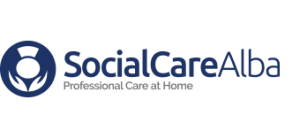
Lead: Jacqueline Quinn (Office Manager)
Link: Nataly Wilson (Director), Eleanor McCurdy (Care Coordinator)
Goal:
To improve consistency and punctuality of support for service users and their families, through good rota management.
Action 1
That Packages of Care (POC) meet the needs of Service Users (SU)
What:
Social Care Alba (SCA) shall advocate on behalf of SU to ensure POC commissioned by EHSCP have the time required to meet SU needs, including when those needs change due to ill health.
Why:
SU needs vary on a day to day basis, having time to support people at home, prevents hospitalisation. EHSCP cancels POC after 7 days of hospital admission, with no guarantee that SCA will be given the opportunity to continue their support on discharge. EHSCP policy of cutting packages results in more hospitalisation, gaps in rotas, visit time changes and a lack of consistency.
Outcome:
1 January 2025
SCA has requested that no review of POC takes place without their input. However despite this EHSCP has reduced POC without our approval. We have continued to deliver larger POC without payment from EHSCP as updated ANR were not received from EHSCP until many weeks later. SCA believes some POC have been cut to an unacceptable level and have challenged this with EHSCP on behalf of SU and their families.
Overall there is now less time to deliver the same level of support, which for many with mobility or cognitive impairment is unacceptable. SCA will continue to advocate on behalf of SU to ensure changes to needs are reflected in the current commissioned POC. Approval by EHSCP for an increase in a POC can take several weeks, however SCA continues to request and advocate on your behalf for a swift decision.
28 February 2025
Over the past 90 days, SCA conducted 10 reviews for new service users, 34 ongoing reviews, and 38 spot checks. Additionally, SCA staff supported 243 other events, including responding to accidents, medication issues, hospital admissions/discharges, end-of-life support, reduced mobility, declining health, no access, and adult protection concerns.
When a person’s needs changed as a result of these events, a request was made to Social Care Direct, their G.P, District Nurse, Physio, or Occupational Therapist. This action changes the package of support each person receives and, consequently, the space in the rota. Rota changes are therefore inevitable but have been made in the best interests of those we support.
Action 2
Electronic Visit Monitoring
What:
Set up digital real time monitoring of visits which can be viewed remotely.
Why:
SU and Families can feel reassured of when a visit is planned and the care staff visiting will be. They know that if a change happens they can see this in real time.
Outcome:
1 January 2025
SCA after a trial of PASS rota management, SCA moved back to Care Planner. SCA operates an electronic monitoring system which can be seen live by SU and families on OpenPASS. The data from this is used monthly to look at ways to improve runs based upon SU desired visit times, gaps between medication visits, travel time, hospitalisation, minimising staff teams & consistency.
28 February 2025
SCA has initiated a monthly audit of visit logs for all staff. These are recorded in their supervision and monitored by the Directors. Targets have been set for staff on the use of QR codes within people’s homes as the method by which they log in and out of visits.
Some people ask why staff are on their phones during visits. Reasons for this include reading visit notes, logging in or out of the visit, viewing required tasks, recording when medication has been given, and leaving visit notes.
Action 3
Promote OpenPASS
What:
Ensure all SU and families have the option of accessing OpenPASS.
Why:
OpenPASS allows real time monitoring of visits, access to visit notes, medication administration, care plans and the ability to give feedback to SCA by the SU or family member. Having the ability to see and manage your own support promotes independence, good communication, reduces anxiety and miscommunication leading to complaints.
Outcome:
1 January 2025
All SU or their family members have been offered access to Open PASS, a record of which is kept by SCA. The majority of people have opted in and can see the benefits immediately. Where a SU or family member changes their mind, then access can be granted quickly. New SU and families are offered access at the start of support being offered.
28 February 2025
We continue to offer OpenPass to all those we support and their families, with around 80% choosing this option. Those who do not wish to use OpenPass can still access information about who will be visiting by other means. Should you change your mind and wish to have OpenPass access, please contact the office who will be happy to assist you.
Action 4
Communication Preferences
What:
Establish communication preferences for each SU or family member of when and how they wish to be kept informed.
Why:
Too little communication can lead to anxiety e.g. a visit is delayed, whilst too much communication can cause frustration from family members of being interrupted unnecessarily. Either situation can be reduced by trying to agree on preferences in advance.
Outcome:
1 January 2025
We have established a communication preferences sheet which lists when and how we should get in touch, e.g. if running more than 30 minutes late, or only in an emergency. We are aware that for some people with cognitive impairment phoning them may cause more anxiety than not, and in those causes we will make a decision based upon the time of day or their current level of understanding and ability to communicate with us. Where a need to communicate is triggered a note is also left on the Visit and/or Journal entry in PASS.
28 February 2025
Your communication preferences continue to be maintained by the office. Should you wish to make changes, please let the office know.
Action 5
Travel Time
What:
Reduce the time taken to visit between service users addresses.
Why:
Time taken by travel is less contact time with SU and adds to the fatigue of care staff. Reliance on public transport is unpredictable, especially at busy times or over winter. The allocation with EHSCP contract for travel time and costs is insufficient to meet the needs of SU. All parties are happier where travel is reduced.
Outcome:
1 January 2025
We create runs where addresses are as close to each other as possible. We allocate staff as close to their home address as possible and consider travel time from home to work during the interview process. We will use the knowledge of staff to alter runs based upon local conditions, walking routes or preferences of SU. Where these do not exist we will determine runs using a proprietary system.
As peoples’ needs change and with it their POC we will change runs to accommodate their needs. Where hospitalisation occurs and no immediate POC is available to match the gap created then runs may have to change to reduce the gap. Changes to runs or visit times outside of the norm are to be communicated to both the SU and staff.
28 February 2025
Stephen is working on alternative ways of scheduling visits and has focused on reducing travel time between visits. Team Leaders have been asked to comment on the current runs and suggest improvements. Unfortunately, when a person dies or their package of support significantly changes, runs need to be adjusted. This has an associated impact on both visit times and travel time. The current contract with Edinburgh, which cancels support after 7 days, remains in place, and SCA has no ability to change this. However, Stephen acknowledges that this does significantly impact runs.
Action 6
Performance Audit
What:
To continually improve punctuality, time spent, method of login and travel time month on month.
Why:
Whilst many issues such as the size of POC are outwith our control, other elements are not. By monitoring these and setting performance targets, we can show that we are continuously trying to make incremental improvements. Any improvement will have a positive impact on SU, staff and families.
Outcome:
1 January 2025
We will create a standard monthly audit of performance targets from February 2025. This shall be reviewed with the Directors monthly and discussed at SMM quarterly. Any adjustments to this plan shall be made at SMM following agreement with all parties.
28 February 2025
Monthly audits of the preceding 90 days have shown improvements in all target areas, including punctuality, visit length, use of electronic logs, and feedback from those we support.
Action 7
Staff Sickness
What:
To reduce the frequency of short term absences and ensure backups are in place.
Why:
Frequent short term absences results in inconsistency in the visiting staff team as replacements are made at short notice. It puts additional workload on those who have to undertake the shift, impacts rota management, Care Coordinators, Team Leaders, HR and Directors’ time. Changes are sometimes unavoidable and impossible to predict, therefore we are unable to inform SU or families in advance. This can lead to frustration and anxiety. Having an agreed substitute can reduce these anxieties and minimise wasted time.
Outcome:
1 January 2025
SCA monitors the performance of all staff electronically and records absences using a Bradford Score. We have policies which support staff wellbeing and meet regularly with staff to address issues which may impact their attendance at work. This includes staff supervision, staff observations, feedback from SU and families, return to work interviews, and performance appraisals. The Director and management team review staff absences monthly, whilst it remains a standing item on SMM quarterly. Where possible a standby is nominated, usually at Team Leader level.
28 February 2025
Staff sickness has continued to fall across all staff groups and is actively monitored monthly using the Bradford Score. Staff supervision includes monitoring short-term absences, with support for those whose sickness remains higher than expected.
Action 8
Staff Training
What:
Improve staffs’ understanding of absence management and staffing.
Why:
Knowing how best to create a staff rota helps avoid simple errors which impact both staff and SU. Having more staff trained in rota management lessons the risk of failure when care coordinators are off and changes have to be made. This includes the preferences of SU to time, gender and staff members. Being able to identify patterns of absences which impact the operation of the service is important so that intervention and support can be offered at an early stage.
Outcome:
1 January 2025
SCA office staff and Team Leaders have undertaken the Care Inspectorate’s suggested training in Health & Care Staffing Framework. Line managers understand the importance of absence management and ensure this is discussed at every staff supervision. Any concerns are raised with the Director for advice. A training programme on how to manage rotas is planned to be delivered to all Office/Managerial staff from February 2025.
28 February 2025
We are continuing to expand the number of people who can contribute to and actively change the rota. Training more staff in rota management means that when rotas need to be changed at short notice, those changes are more likely to be optimal. Current training is being delivered to Team Leaders.
